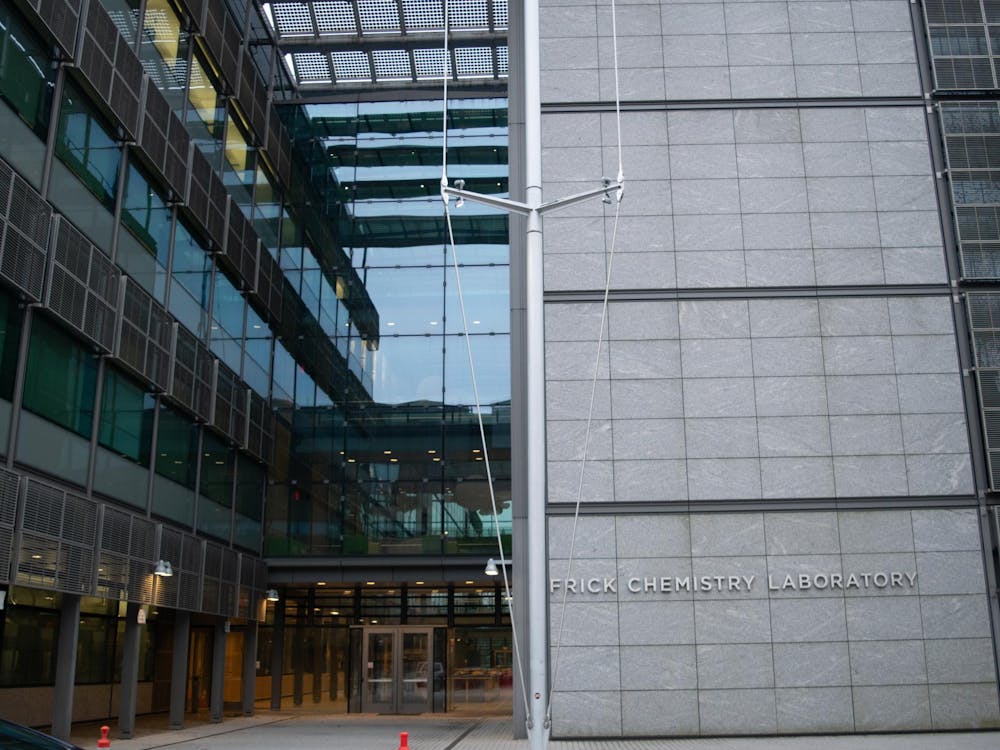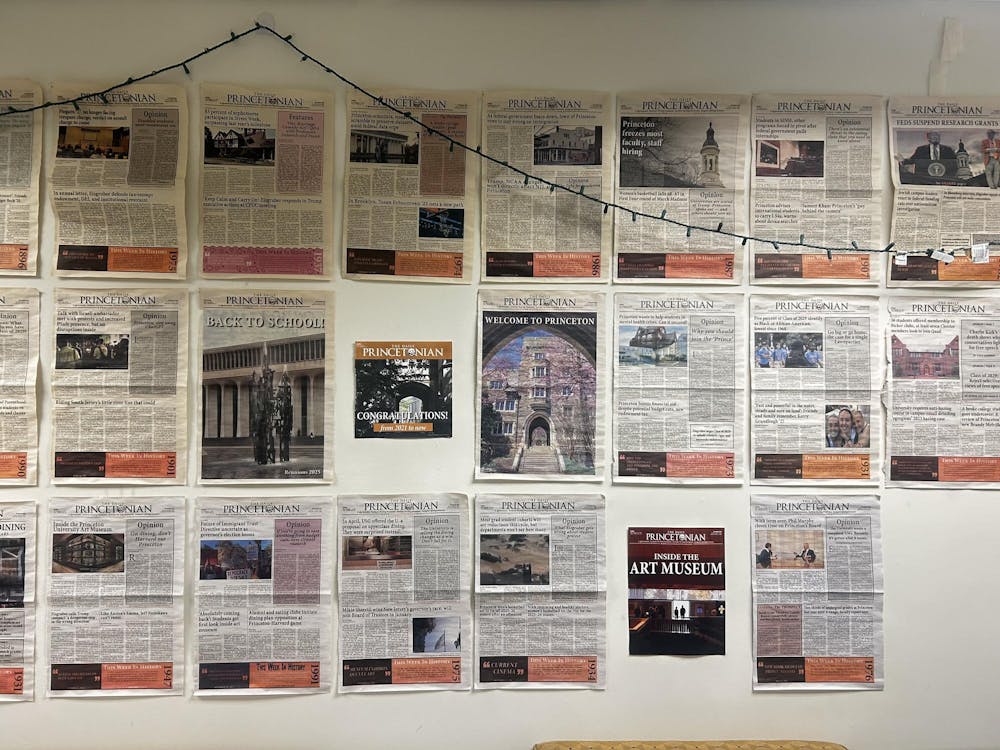Equipped with colored water, ice and highball glasses, 14 undergraduates learned the art of bartending from a professional of the trade last night in Frist.
During the two-hour session, nicknamed "The Most Popular Course at Princeton," the students learned the drink-mixing and customer service skills necessary to serve at University social events or other small-volume bars.
"The basics of bartending itself are not that complicated, but together there's a lot of information to be learned," Eddie Jilozian of the Philadelphia-based Mixology Wine Institute, who taught the course, said. "It can be very confusing if you've never seen any of it before."
Until three years ago, the class was taught by Princeton students and used real alcohol, Bob Nichols '07 of Princeton Student Agencies said.
"When people were drinking their own drinks before, it wasn't very conducive to a class environment," he said. As a result, Student Agencies reached out to a professional bartending school to teach students.
Before the class started learning drink recipes Wednesday night, Jilozian stressed how much he enjoyed the time he spends tending bars. "Even if I'm having the worst day, I still want to go to work," he said.
The class received a packet that contained recipes for drinks grouped into four separate categories — highballs, shots and shooters, martinis and Manhattans and tall drinks.
After learning a counting method that accurately measures how much alcohol one has poured in a given time, students practiced serving each other high balls, as others shouted orders for screwdrivers (1 oz. vodka, 2 oz. orange juice) and tequila sunrises (1 oz. tequila, 2 oz. orange juice, top with grenadine).

While the mock bar served nonalcoholic drinks, the other half of the class learned customer service techniques to help maintain a positive bar atmosphere. Tips ran from "know your regulars" and "learn some bar flair" to a warning not to date customers — "especially more than one at a time."
Emma Dinsmore '09 said that she had expected the class to focus on memorizing drink recipes and was happy to have the chance to ask questions and learn the finer points of bartending.
"It's more interactive than sitting in front of your computer and looking up recipes online," she said in an interview afterwards.
The class taught students more about the drinks they prepared than simply how to make them. Several cocktails were identified as typical "girl drinks," and Jilozian also noted that the New York bar Cuba Libre serves the best Mojitos in the city.

Students also learned the story behind the rum and Coke cocktail. American soldiers stationed in Cuba supposedly mixed Coca-Cola and rum to symbolize American and Cuban integration. Their toast, "Cuba libre," is now an alternate name for the drink.
Nichols estimated that 40 to 45 students are enrolled in the four sections of the course, though he said he hoped more would sign up for the classes taking place on the upcoming two Saturday afternoons. Students can sign up for the course, which costs $95, on the agency's website, princetonbartending.com.
After completing the course, students must pass an online test to become a certified bartender.
But the course has more benefits than a chance at certification.
"Some of my friends are a bit cautious because I like to experiment at parties and see what tastes good, but most are just happy that somebody's making them drinks," Nichols said.







